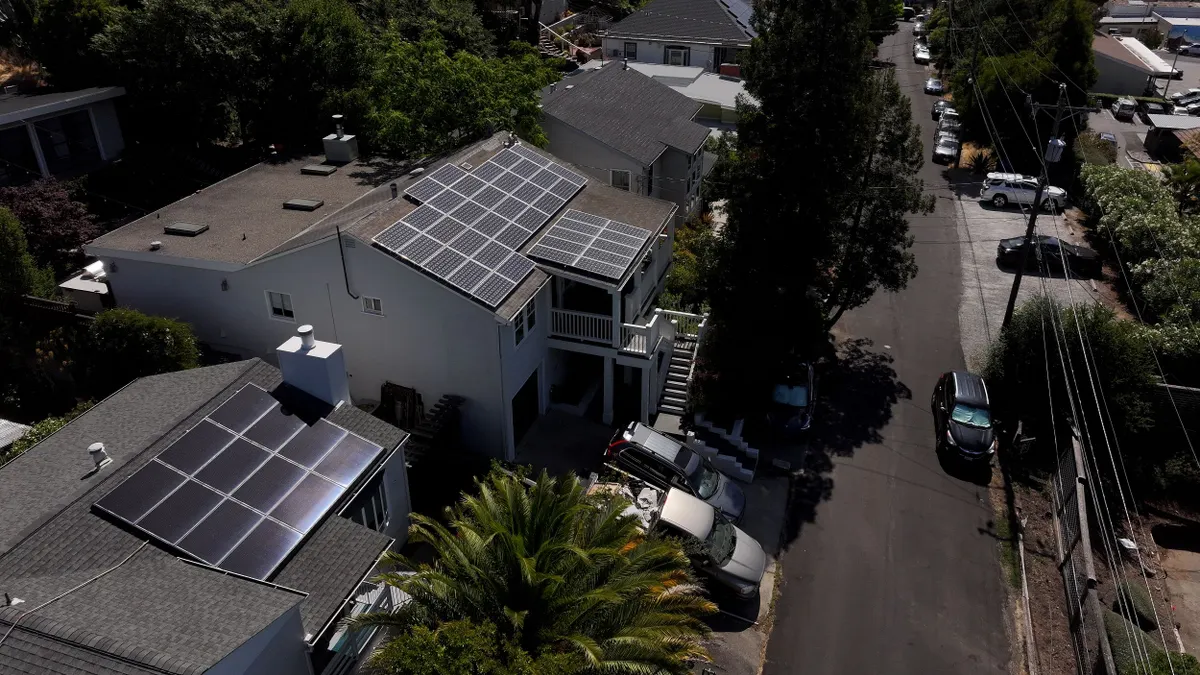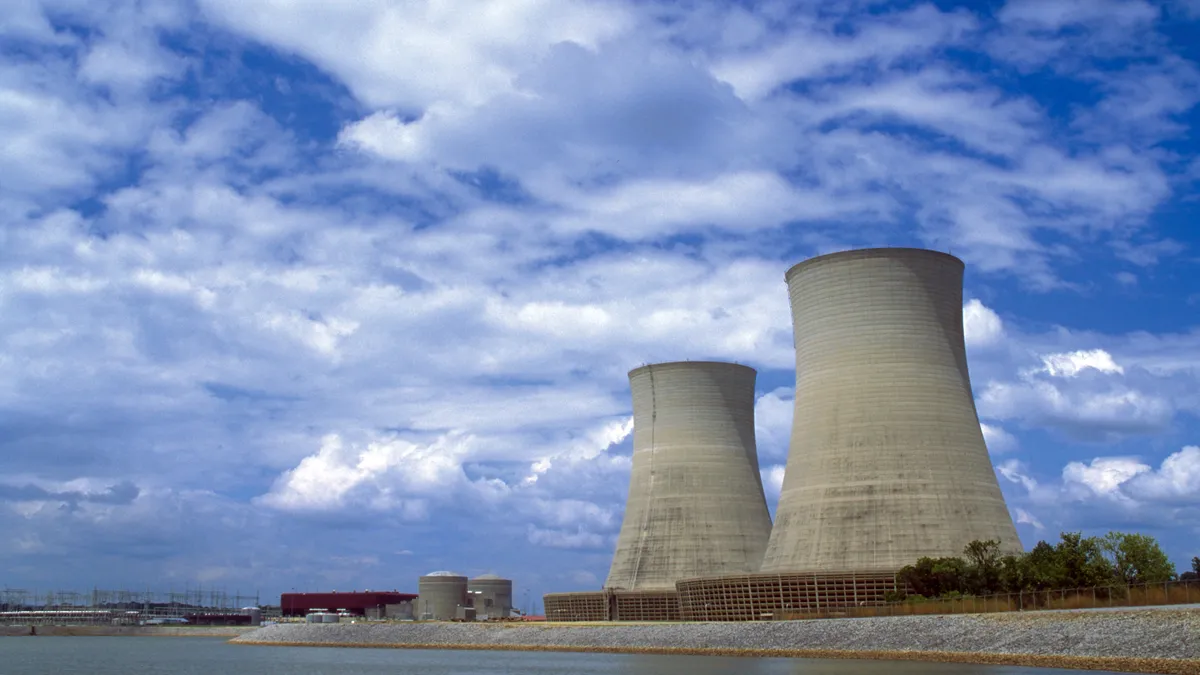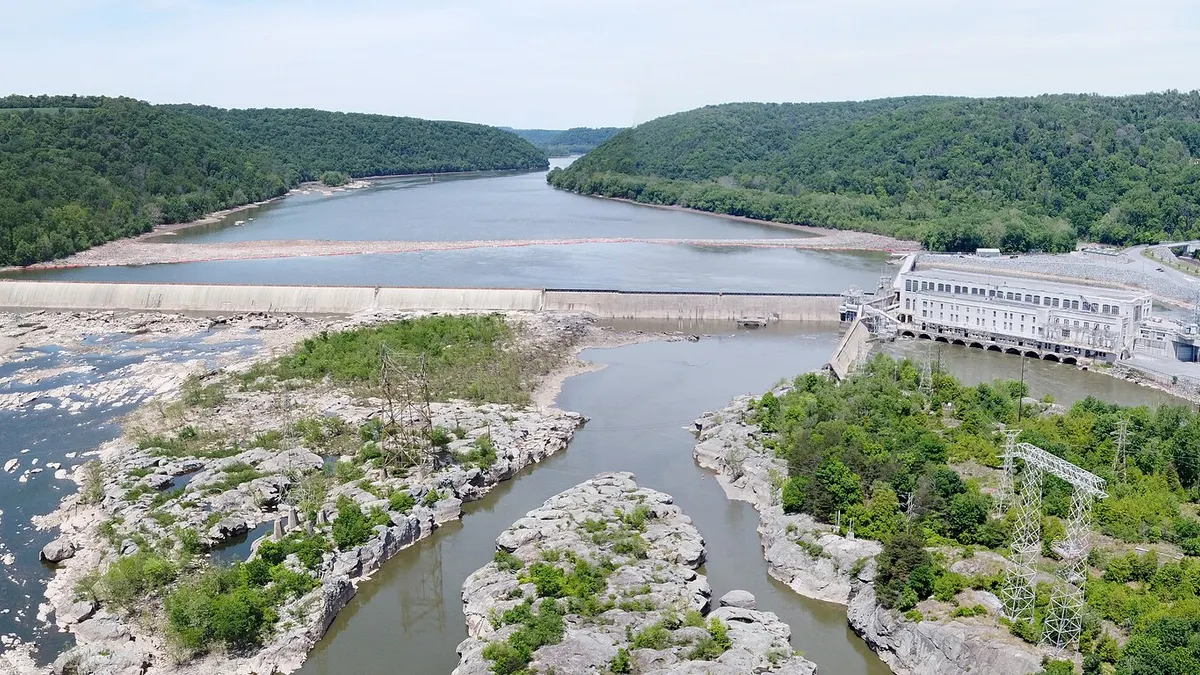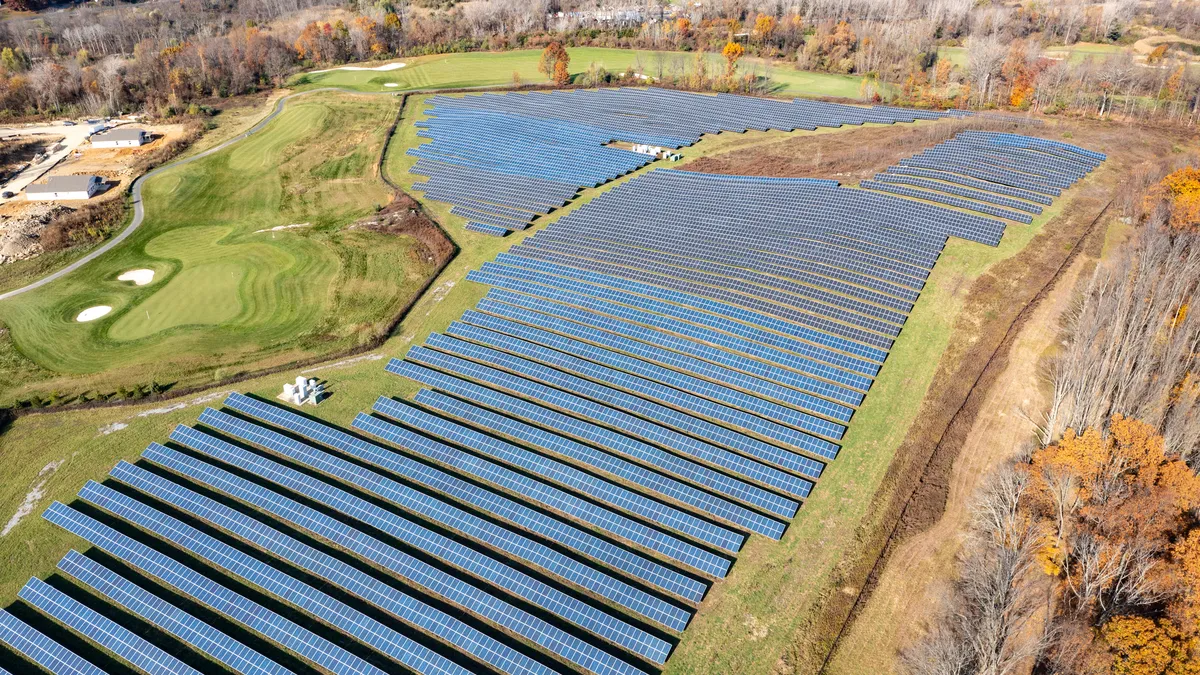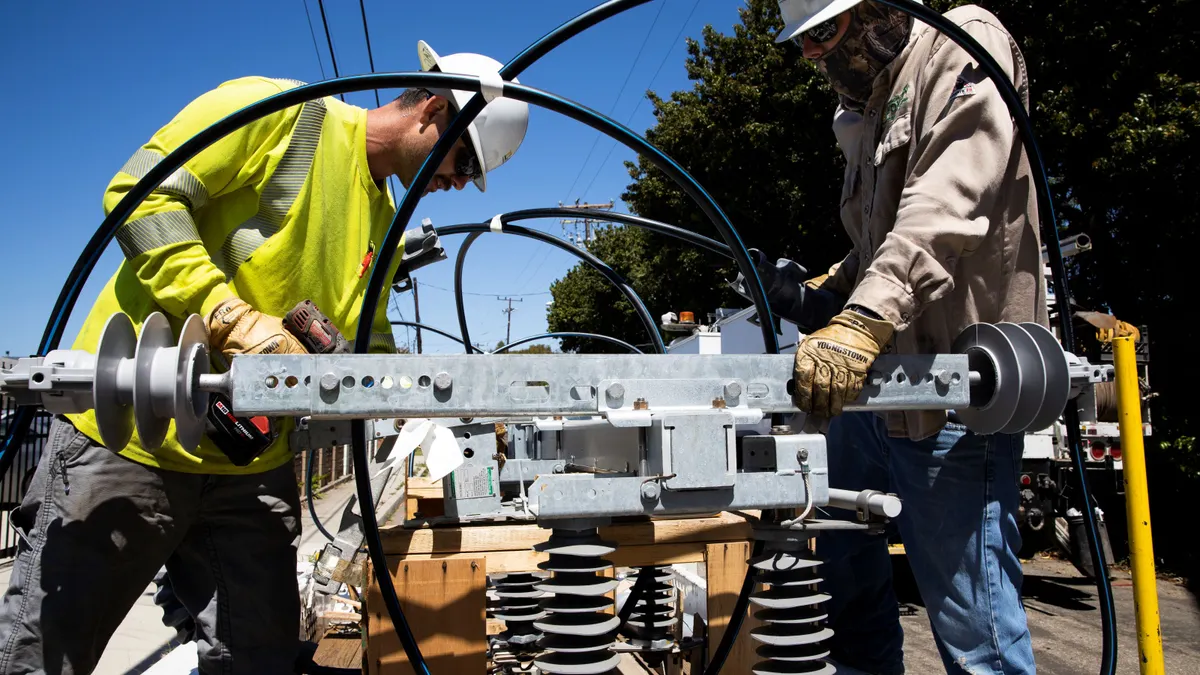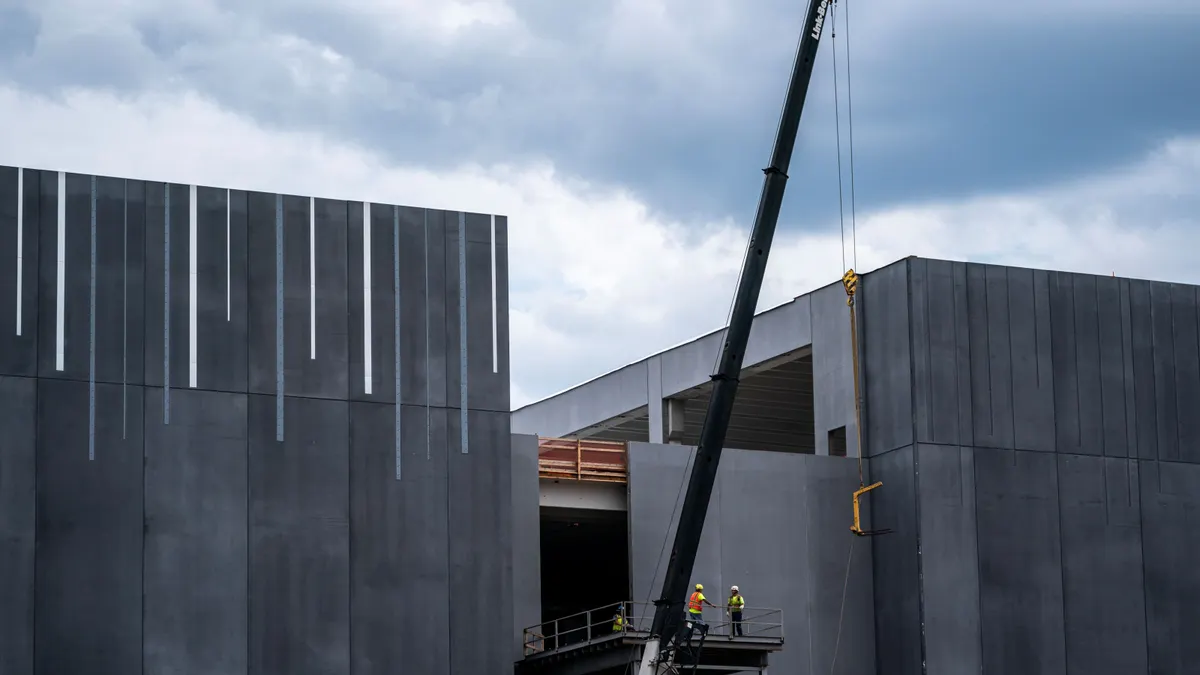This week, Utility Dive attended CS Week in Charlotte, a utility conference focused on the evolving customer relationship and how power companies can leverage it for growth. Here’s a quick rundown of the most important things we saw and heard.
Duke Energy CEO: Utilities must change the way they think about customers
For all the marvels and conveniences the electric system in the United States offers its citizens, we probably have engineers to thank the most. It is they, after all, who largely designed the gargantuan U.S. grid and keep it running day in and day out.
But if the utilities that employ them are going to prosper in the 21st century, they may need to start thinking a bit less like their most technically-gifted employees.
That was the takeaway message from Duke CEO Lynn Good’s keynote address at CS Week on Wednesday in Charlotte. Speaking to a crowd of power companies eager to enhance their consumer relationships, Good urged them to go beyond their traditional ways of thinking to consider each individual customer, not just their whole consumer base.
“That [utility] culture is not a customer-centric culture,” she said. “It’s one that has been build on great engineering expertise. It’s one that cares about assets, it’s one that cares about line miles, kWh, capacity factors, [and is] very system oriented.”
Utilities like Duke have a tendency to pat themselves on the back when they’re doing well by their own standards of reliability, outage duration, and the like, she said. But for many customers, those statistics mean little in practice.
“We may feel so good about frequency and duration of interruptions of power,” she said. “But it sort of doesn’t matter if the duration and the frequency of outages at the substation and transmission line that sits right next to an industrial facility isn’t very good.”
If that facility loses a million dollars on a product line that has to be dumped when the power goes out for five minutes, then those statistics mean nothing, Good argued, and the same goes for residential customers. If utilities want to be successful in retaining customers and keeping them happy, they’ll need to consider their individual needs.
Driving that need for individualized attention — and the opportunity to deliver it — are the changing demographics of the customer base. Millennials, Good said, are already 80 million strong in the United States and will soon be the biggest chunk of the utility customer base. Their new ways of consuming information will necessitate a dramatic shift in how utilities communicate with their customers.
“On average, every hour, a millennial will switch between media platforms (like a phone, computer or TV) … 27 times," she said. "They’ve become accustomed to multitasking, checking things out, getting information from a variety of sources.”
Utilities will have to work hard to meet these customers where they are — not only to reach them in their preferred method, but also tailor the message for the individual customer. But the Duke CEO said it’s essential to do so, because that’s how everyone thinks of customer service in this day and age. Except for perhaps utilities.
“Our customers have opportunities to understand what great customer service is every day of their lives as they interact with Amazon or they go to Nordstrom or … anywhere where they have the opportunity to experience another service provider's product or service,” she said.
If they aren’t already, customers are quickly coming to expect that level of flexibility and choice in customer service from the utility industry, reinforced by their experiences in the broader economy.
“They want flexibility. They want different tariffs. They want their bill options to be different. They want products and services. They might want rooftop solar. They want communication in the form that they want to be communicated with and in a language that they understand,” she said.
Making that change is going to be a huge cultural shift for utilities, Good said, but in the long run they haven’t really got a choice. With competition steep for customers in deregulated states and new third party vendors entering the industry, it’s time to innovate or perish.
“[W]e provide our customers an extraordinarily vital service… and the delivery of that service is undergoing dramatic change,” she said. “We must transform. If we don’t transform, then I believe we’ll be left behind as an industry.”
Tendril-Duke partnership: My Home Energy Report
Utility Dive also got the chance to speak with Brad Langley, Director of Corporate Marketing and Communications at Tendril. He filled us in on their one of their projects with Duke Energy — Duke’s My Home Energy Report.
Launched in 2012, the program began by mailing out 500,000 reports to Duke customers detailing their home energy usage. That program did well, but Duke felt the need to utilize new platforms, so now the Home Energy Report is available in a mobile-friendly website for Duke users, complete with graphs that show a user’s consumption and compare it to average and efficient homes.
“Duke continues to evolve the program,” Langley said. "[While it] started with just paper home energy reports, they recently launched My Home Energy Report interactive, which is the online engagement portal... they’re also doing email reports and they kind of tap into people’s desires to receive electronic communication as opposed to paper."
That kind of program is getting more common among the nation’s utilities, but Langley said that one thing that’s made the Duke program valuable for the utility is that they can use the energy reports to push other value-added products.
“[The reports] provide insights in energy usage to get people to reduce their consumption, give them tips and tricks for doing so, and then they also .. include offers for different products and services from different duke departments to further put Duke products in the hands of their customers,” Langley said.
For Duke, it’s all about building new, personalized relationships with customers, as Lynn Good preached in her keynote.
“Their goal is to become a trusted energy advisor, so they’re really opening up a dialogue about energy use and not just that sort of one way deliverer of commodity electrons,” Langley said.
As for what’s next, Langley said Tendril is working with the utility to enhance the customer experience and information available in the Home Energy Reports.
“They’re also considering things like home energy assessments, energy calculators, and the goal is to provide as many value added services to customers to give them insight to energy and help them engage with that energy,” he said. “The hope is that by starting that dialogue they can open up more conversations about different products and services they can provide or different things they can do for their customers.”
Utility mobile apps: The future of engagement?
Utilities are constantly looking for new ways to engage the customer, and one of the ways many have found success in recent years is through mobile apps. (Shameless plug: Have you downloaded ours yet?) But the bar is high for customer satisfaction.
Saurabh Bansal, director of innovation and business strategy at Reliant Energy, an NRG subsidiary in Texas, told the workshop audience that his company introduced their first app in 2010 — and completely failed.
“If I can’t pay my bill, I can’t use your app,” was the general customer reaction toward the first app, Bansal said. After a flurry of one-star ratings, the Texas electric retailer went back to the drawing board.
Now, the Reliant app allows customers to pay bills, report outages, receive high-bill alerts via text and see their projected energy usage for the next few months, among other functions.
Bansal said the projected bill functions are most popular with customers, since it lets them get a leg up on their energy usage and takes away bill shock. But other proactive services the app provides are popular as well, like one that texts customers a few days before their next bill is due.
But, Bansal cautioned, utilities need to be careful about how their app crunches information. For instance, when it comes to the projected bill functions, Reliant tries to overestimate, even if it sacrifices accuracy. The reason is clear, he said: Consumers like it when they feel like they’re saving money. And in the ultra-competitive Texas market, that kind of feeling can make all the difference in retaining a customer.
Next up to speak about their mobile app was Walter Stefy, process owner of customer experience at Pepco. He said that Pepco’s first app came out six years ago, on Blackberry, but they have Android and iPhone apps now.
The Pepco app can break energy usage down to the hour, and compare it to historical averages. It also allows customers to site and report burnt out streetlights to the utility via their mobile phone. Stephy said they have a whopping 2,900 streetlights reported out every month.
During Hurricane Sandy, he said 14% of outage reports from customers came through the app, compared to 9% through the Pepco website. The rest were traditional methods like phone calls.
In addition to allowing customers to pay bills online, Pepco’s app can give full and detailed outage maps with details down to the street level, as well as outage alerts and estimated restoration times, Stefy said. And for a utility that’s taken some heat in recent years for how they respond to severe weather events and outages, putting that detailed information in people’s hands can give them peace of mind.
Finally, Kim Friebel, the web and mobile manager at ComEd, explained her utility’s app, which offered many of the same features as the other utilities. Since it was introduced three years ago, ComEd has seen a growth of more than 100% in app subscribers each year, according to a graph that Friebel showed.
The ComEd manager stressed that having a mobile-friendly website is not enough for today’s utilities. Customers like notifications — things like high-bill alerts, outage restoration estimates, and other things that are easier to execute on an app than a mobile website.
Friebel told Utility Dive that ComEd is working to add additional functionality to its app this year. She said the goal is to get everything about a customer’s energy usage in one place, so they can use the app as the platform for all their energy needs, from paying bills to smart thermostat controls.
“The challenge is for us to continue to be industry leaders and continue to lead that charge” on customer engagement, she said.
Coming soon!
Utility Dive had the chance to speak at length with Duke Energy about its renewable energy plans, both on the regulated and unregulated side. We also spoke with PECO, the Pennsylvania-based Exelon subsidiary about their time-of-use pricing pilot and the fascinating results from that. Keep your eyes peeled for those stories in the coming weeks!



